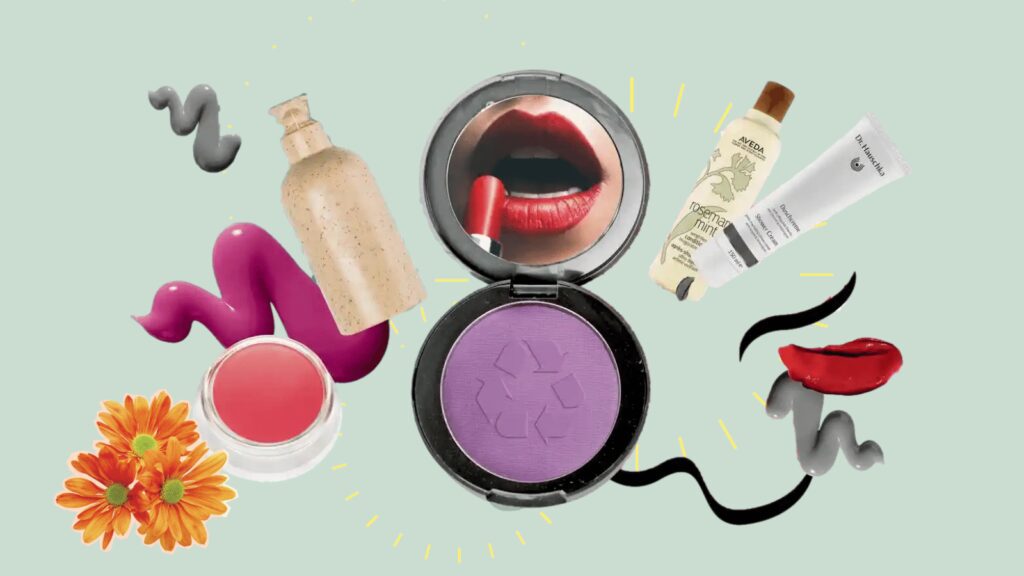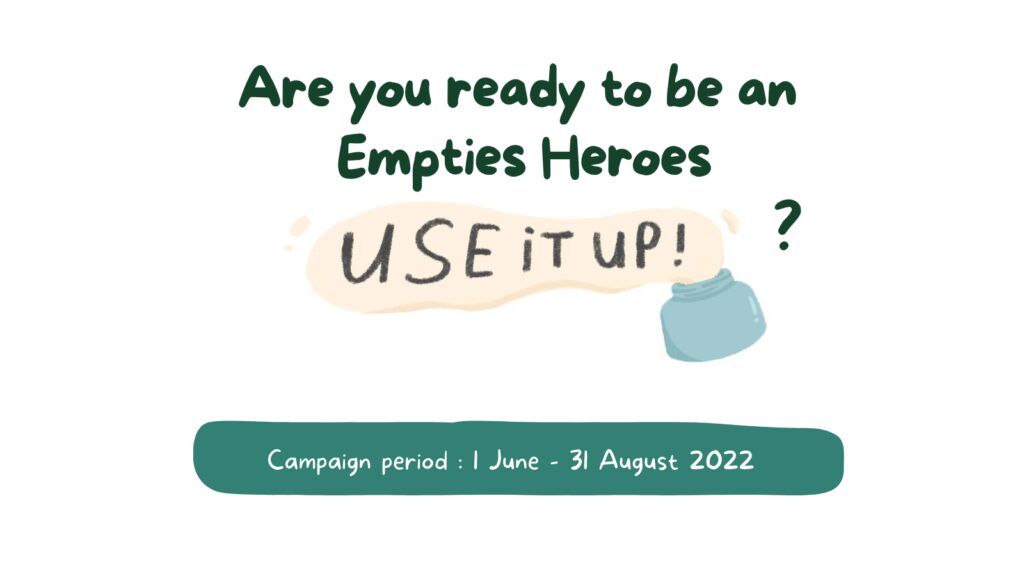Let’s say one person uses five products a day, and those products last one month. Can you imagine how much waste the beauty industry Creates ?
The numbers are fantastic, even if you’re not a math whiz!
Greater public awareness of the climate crisis has pressured large retailers to ‘green’ production chains and make them more sustainable, but the bulk of the work is yet to be done. The personal care and beauty industry produces more than120 a billion units of packaging every year globally—most of which are not truly recyclable (source: PlasticPollutionCoalition/Guardian). And the problem is set to get worse. The global cosmetics market generated approximately US$ 341.1 billion in 2020—and it’s expected to grow to US$ 560.50 billion by 2030.
RELEVANT SUSTAINABLE GOALS


The culture of fast beauty to update skincare and makeup for the year’s new look has also generated high levels of waste and pollution, negatively impacting the environment and human health. This is a source of plastic pollution that needs to be addressed.
Primary Packaging
The primary packaging in cosmetics and personal care is the bottle, tube, or jar that contains the actual product. So the primary package holds the cream, lotion, powder, gel, or whatever is meant to be applied directly by the consumer.
Secondary Packaging
Secondary packaging is the outer packaging, commonly a box, that holds the primary packaging. The secondary packaging serves various purposes, such as branding when displayed on store shelves and providing information on the product, such as ingredient lists, product codes, and how to use them.
Secondary packaging reflects your brand and quality. Secondary packaging may be the first opportunity to interact with a potential buyer, making it all the more critical that it’s attractive, engaging, and reflects the real value of what’s inside. The outer box, both in design and structure, must be able to grab the attention of your potential buyer in an instant. It must entice them to pick it up and experience it further. Some potential buyers will read the label, others may open the box out of curiosity, and if sealed, they may even sniff the box, hoping to catch a whiff of the alluring product.
Even though primary and secondary packaging is separate, they must work together.
Tertiary Packaging
In contrast to primary and secondary packaging, tertiary packaging is a form of packaging waste that is not visible to the consumer, as it is usually disposed of at the warehouse or at the storage location where products are stored. As a general rule, tertiary packaging consists of cartons or boxes that group the same kind of products together.
Honorary mentions
Microplastics
Aside from visible packaging waste, there are other types of waste from beauty products, such as microplastics or particles from plastic smelting that are very small, less than 2 millimeters. Although it is not visible microscopically, its form has not disappeared from the face of the earth. Microplastics are ingested by fish in the ocean and enter our bodies via seafood, table salt, and even the air.
The question is: Why does it become small before you realize it if you swallow it? The first thing you need to know is that microplastics absorb pollutants and other chemicals that are released into the environment. Microplastic particles can be millions of times more toxic than the water around them.
Considering this, why are manufacturers still using microplastics in their products? Answer: Microplastics play a role in the final product. Exfoliants made from microplastics are less expensive than natural ones.
In addition to making exfoliants or scrubs, microplastics are often found in color cosmetics with glitter. Now, suppose you want to start avoiding products that still use microplastics. In that case, you can look at the ingredient list and avoid ingredients such as Polyethylene (PE) or often written as Polyethylene Glycol (PEG), Polypropylene (PP), and Polypropylene Glycol (PPG), Polymethyl methacrylate (PMMA). ), Nylon (PA), and 500 other ingredients that you can check here.
Other single-use products & disposable beauty products
There are alternatives, so you can get the benefits of the products while being more conscious of their environmental impact.
There are now silicone-washable cotton buds, sheet masks that come in a single package, reusable razors, and organic beauty pads. The key is to consciously choose environmentally friendly alternatives, no matter how small.
In addition to making exfoliants or scrubs, microplastics are often found in color cosmetics with glitter. Now, suppose you want to start avoiding products that still use microplastics. In that case, you can look at the ingredient list and avoid ingredients such as Polyethylene (PE) or often written as Polyethylene Glycol (PEG), Polypropylene (PP), and Polypropylene Glycol (PPG), Polymethyl methacrylate (PMMA). ), Nylon (PA), and 500 other ingredients that you can check here.
Join #EmptiesHero Challenge
With cluttered shelves and makeup bags, the beauty industry’s products are overwhelming – and so is the amount of waste. Every year, a billion pieces of packaging are made, most of which end up in landfills. Changemakr Asia is fighting fast beauty and we invite you to be a part of it.
You may also be interested in :
#PakaiSampaiHabis Campaign : Real Action For Sustainable Beauty




